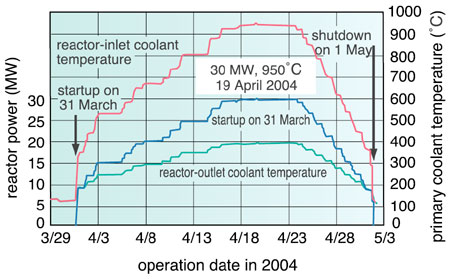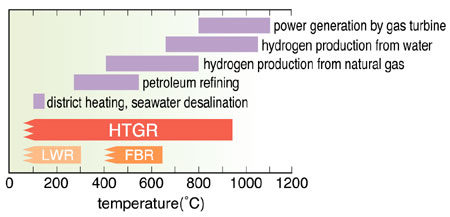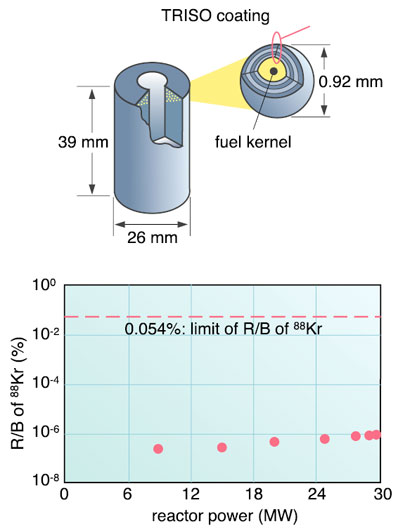The High Temperature Engineering Test Reactor (HTTR), which is the first high-temperature gas-cooled reactor (HTGR) in Japan, attained its rated thermal power of 30 MW and reactor-outlet coolant temperature of 950 degree Celsius(Fig. 1-1). In the past, Germany's AVR reached its reactor coolant temperature of 950 degree Celsius inside the reactor vessel; however, the HTTR was the first in the world to deliver 950 degree Celsius coolant outside the reactor vessel. Attaining a reactor-outlet coolant temperature of 950 degree Celsius expands the HTGR use beyond the field of electric power generation. Further, highly efficient high-temperature gas turbine power generation becomes possible, as does hydrogen production from water (Fig. 1-2).
During the 950 degree Celsius operation, the reactor characteristics and performance were confirmed, and the reactor behavior was monitored to verify the safety and the stability of the reactor. Radiation activity of fission product gases in the primary coolant, one of the major test parameters, was monitored to evaluate the release behavior of the gases from the fuels. The levels of the released fission product gases were confirmed to be within their limits during the high-temperature test operation. Fig. 1-3 shows the HTTR fuel with triisotropic (TRISO)-coated fuel particles and the measured release-to-birth ratio (R/B) of 88Kr. The HTTR particle fuel has excellent properties and its four-layered coating acts as a perfect containment.
The Very High Temperature Reactor (VHTR), an advanced HTGR, is a candidate for the Generation IV reactors to be commercialized in around 2030. The United States, France, and other countries are now promoting research and development for the VHTR. JAERI leads all countries in VHTR development. The attinment of 950 degree Celsius is a major contribution toward the realization of hydrogen production from water using the VHTR.
|


